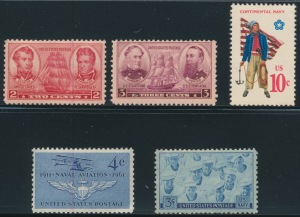Monthly Archives: October 2011
- Posted October 12, 2011Burma, which its citizens call Myanmar, is one of the least developed countries in the world. Until two hundred years ago Burma was a feudal pre industrial society with the vast majority of land owned by a few war lords and families who were traditionally at war with each other. A hundred year British Occupation had little modernizing effect and since the British left in 1948, Burma is once again a feudal preindustrial society ruled by a few war lords (now called generals) and a few families who are traditionally at war with each other. Burma's leaders have shown remarkable wisdom in their ability to persevere in the oppression of their people. So many oligarchies take hostile international stances and stir up trouble for superpowers. This is internally destabilizing as it causes the US and its allies to support opponents of the regime. The Burmese model is far smarter. For fifty years Burma has had a very restrictive entry policy, almost no economic developmentRead more »
- Posted October 11, 2011If philately were a branch of sociology, political science or academic history it would be studied far differently from the way that it is studied by stamp collectors. Much less attention would be paid to printing and perfs and gum and far more to the actual stamp designs themselves. Scholars would study the new issue planning and approval process, how designs are chosen, who gets to propose stamps and who gets to design them. Studying the process would determine how open the society is and how much of a propagandistic purpose stamps play in social organization. An analysis of this would show countries like North Korea today or the Peoples Republic of China in the 1960s or Russia in the 1930s as profoundly closed societies offering highly propagandistic stamps. The smiling workers happily enjoying their jobs that are portrayed on these stamps are so ubiquitous as to suggest that the realtiy was far different. Third Reich German stamps were profoundlyRead more »
- Posted October 10, 2011Read more »
Philatelists have a great knowledge of more recent history and geography. I am the crossword puzzle go to guy in my home for clues relating to when and where. But we fade back to normal if historical knowledge is needed before 1840 when the Penny Black was first issued. Imagine if stamps had been first issued during the Roman Empire. Then, we philatelists would be expert in two thousand years of world history. And imagine the wonderful stamps and covers there would be. Fall of Rome last day covers. Renaissance forerunners. French and English Royal Mistress definitives. The American Revolutionary War would be more avidly collected than the Civil War. For philatelists the history of the period we collect is easily learned almost by osmosis as we collect the stamps we love. What makes philately most interesting is that collectors learn not just history but geography, sociology, political science-indeed most of the social sciences -when we collect our
- Posted October 09, 2011Read more »
Robberies of stamp collections used to be a real problem. In the 1970's a large ring of stamp thieves were caught. They had an APS membership directory with them that they were using to figure out who to knock off next. When I was on the Board of Directors of the APS in the early 1980s, my home was burglarized, as were the homes of several other board members. But, stamp thefts have decreased in recent years and usually when philatelic materials are stolen it is part of a general burglary and not stamp specific. Insurance rates for stamps have dropped dramatically in real terms over the last thirty years.
The reasons for the decrease in stamp theft are three. First, stamp prices have declined relative to the value of most other things. A mint US #C18 sold for $200 in 1980. It sells for $40 today and at the price levels for most stamp collections the risk of stealing them is not worth the reward. (Crooks are among the most rational economists around). Second, stamps are - Posted October 08, 2011Read more »
A remarkable aspect of philately is that unpopularity breeds further unpopularity. It is truly unusual to see a good collection of nearly any South and Central American country. Brazil, Argentina, Mexico and Cuba are exceptions, but for the other twenty or so countries that make up rest of the southern Americas, collections that are even 75% complete for major Scott numbers are quite rare. The reason is financial but not in the way you might think.
Take Ecuador, for instance. It is a country that is just below average in per capita income but with a large middle and upper middle class and several large cities (philatelic popularity is related to rates of urbanization). There are few real rarities by price among its stamps. Its issuing policy is conservative and appropriate. It should have a decent number of domestic collectors as well as an active expatriate collecting community and yet I can't remember the last time I've sees a mostly complete Ecuador collection. The same - Posted October 07, 2011Read more »
Steve Jobs died this week at the very young age of 56. While many different people have been instrumental in the electronic transformation of the last thirty years, few have had more impact on how, when and why people use computers than he was. Information technology has changed all fields including philately and Jobs' death lets us reflect on how things have changed for us. Thirty years ago every serious collector needed to subscribe to a hard copy magazine or be a member of the American Philatelic Society in order to collect stamps. Linn's was a buyers marketplace in 1975 with hundreds of ads listing stamps for sale. Many dealers used Linn's as their primary selling source and that was because many collectors did most of their buying from those lists. Today, Linns is the only mass circulation philatelic magazine left and it is a fraction of its former size and has only a small subscriber base. Linns ads are almost entirely buying ads from dealers with almost all selling now being done
- Posted October 06, 2011Read more »
It is always interesting to speculate on future winners and losers in the stamp market. Philatelic popularity is ever changing. In 1900, foreign postal stationery cut squares were a serious specialty that looked likely to continue in popularity. Today, almost no one collects them. In 1950, US precancels were avidly collected. Today there are few fans. In 2000, numerically graded "perfect quality" common stamps were the rage. Now, after serious losses, collectors see them as the marketing sham that they were. Tens years from now I think the biggest loser will be US First Day Covers. FDCs are a relic of the 1950s when they first gained popularity. They were a nice adjunct to a regular US collection largely because the United States issued so few new stamps (In 1953, the USPS new issue total was three). Collectors looked for ways to expand their appreciation of new issues and First Day Covers were one way (as were plate blocks). Now with hundreds of issues per year, FDC collecting
- Posted October 05, 2011Read more »
Watermarks are a design that are put in paper by the manufacturer to identify the paper as their product. They are an outgrowth of the earliest paper which is called laid paper. Laid paper is produced by allowing the paper pulp particles to coagulate on a bed that is a screen made up of closely knit small parallel rods of metal. The pulp coalesces in a pattern of thickness and thinness that mimics the bed that it was made on. When paper technology advanced and paper was produced on a cloth bed (where the fibers had been woven-thus "wove" paper) paper had no thick-thin variance within the sheet. Paper makers found that they could put a pattern in the cloth bed that the paper was formed on and, when the fibers settled, the pattern would show up in reverse as an area where the paper was thinner. These were the first watermarks.
When stamps were first proposed the major objection to their being issued was fear of counterfeiting and washing and reuse. It was for this reason that the - Posted October 04, 2011Despite a substantial increase in the last several years, the stamps of India and States are still undervalued and under appreciated. As the economy of India has grown and as the Indian diaspora has become more financially successful in the many countries to which Indians have moved, the stamps of India and States have grown tremendously in popularity. But despite the ebb and flow of short term popularity, there is one component that will contribute to increasing prices for these stamps and that is their intrinsic scarcity. There are three hot countries now-China, Russia and India. The reasons for the vastly improved popularity of these countries is the same- greatly improved local economic conditions, highly educated nationals and at least in the case of India and China, vast numbers of native born people living in other countries (expatriates always collect in greater numbers than people who stay at home). But there is one aspect of price pressure that favors IndiaRead more »
- Posted October 03, 2011Read more »
Most people are not very comfortable with change and certainly this feeling increases with age. So it is not surprising that the new program that the post office announced to begin featuring living people on postage stamps has been received suspiciously by the organized philatelic community. It's always a good idea when reflecting on a change to speculate what it would be like if the situation had always been what the change would take us to. Supppose the United States Post Office never had it's self imposed "ten years dead" rule? And also suppose that the new issues of the United States had continued to be responsible and used living persons in a reasonable way- advancing civic goals, good citizenship and at the same time encouraging people to save stamps because of their interesting current themes. And then suppose that a proposal came forth to restrict issues to commemorating only those ten years dead. Would you support that? Would any reasonable person? The new Post Office policy is
- Posted October 02, 2011Read more »
This is the punch line to a rather sad joke. A waiter is waiting on a group of sour customers. Everything is a problem, nothing is good enough. At the conclusion of the meal the waiter, instead of asking if everything is alright, asks if anything is alright. We live in angry times or at least in times where it is acceptable to show just how angry you are. Political discourse is based on the principle of who can express the most hostility towards the other side. Some political commentators and politicians would have you believe that there has never been a worse time in America. But, really, are things worse today than they were in the 1950's? I remember Air Raid drills in elementary school where we went into the hallway and practiced holding our heads between our legs to protect us (I don't know how) from a nuclear attack. Or the 1960's and the Vietnam War and Watergate. Or the 1970's and the gas lines and hyperinflation. Or the fierce recessions of the 1980's and 9/11 in 2001. Certainly



